Many lenses in the Art range have been very well received both in lab-tested reviews and by end-users in the real world, so any new lens in the range has quite a legacy to live up to.
Sigma lays claim to being the original makers of ultra-wide angle zooms, and this is in fact the third generation of the 12-24mm. Hopes are high, but has it hit the mark and can it take on the might of the Canon 11-24mm at a much cheaper price point?
At a suggested retail price of $1599 (USD), it is by no means a cheap lens, but weighed against the Canon 11-24mm at $3000, it does seem like quite a bargain if its image quality can match up.
Featuring an array of lens technologies and a variety of different exotic glass types, including FLD, SLD and aspherical elements (16 elements in 11 groups), the 12-24mm certainly seems to have the optics to perform. It also features a new HSM autofocus motor to drive the large lens elements smoothly, quickly, and quietly. With all of this technology, how does it perform in the lab?
We analyzed the lens on the latest Canon EOS 5D Mark IV to really test its performance.
Performance
Mounted on the EOS 5D Mark IV, the 12-24 f/4 Art lens performed remarkably well, with an overall DxOMark score of 23, with the best performance found at a focal length of 16mm and an aperture set to f/4. There is a spread of performance through the zoom range, though and that is something to be aware of.
In the sharpness tests, the lens scored well, offering 16 P-Mpix. If you look at prime lenses, this may seem low, but that is a characteristic of wide-angle zoom lenses rather than indicative of poor performance here.
For an ultra-wide lens, the distortion and vignetting are also very well-controlled overall, with vignetting showing only a 0.7EV drop at the corners relative to the middle of the frame.
Looking at the sharpness scores, at 12mm the results are very good and very uniform across the frame when shooting at f/8. Drop the aperture to f/4 and the performance is still good, but does drop off slightly at the edges. Equally, closing the aperture down to f/11 and f/22 again sees a drop in sharpness. This trend follows throughout the zoom range, all the way up to 24mm.
For distortion, there is a slight shift in the zoom range: at the wider focal lengths, between 12mm and 16mm, there is a little pincushion distortion. Beyond 16mm, this changes to barrel distortion, though this mostly stabilizes beyond 18mm.
The vignetting scores are very interesting, as the performance is pretty much homogenous at all focal lengths and aperture settings – a remarkably good showing for an ultra-wide angle lens.
The final score is for chromatic aberration. On the DxOMark scale, a value of 5µm is considered visible, so a score of 8 means there is some chromatic aberration present. In isolation, this may seem poor, but when compared to other lenses in this category, it is remarkably good.
Compared to
There are two obvious lenses that are directly comparable to this new model – the Canon EF11-24mm f/4L USM, and the older, second-generation Sigma 12-24mm F/4.5-5.6 EG DG HSM II. As an Art lens, the new Sigma comfortably outperforms the older Sigma lens in every measurement category, offering increased sharpness and light transmission, and decreased distortion, vignetting, and chromatic aberration. The results in all areas represent not just a small step forward, but quite a major leap, hence the DxOMark overall score of 23 compared to the previous lens’s DxOMark score of 17. Given the stated aims of the Art lenses, this is by no means a surprise, and anyone looking to upgrade from the older version will find no reason to complain.
Arguably the more meaningful comparison though is to the Canon 11-24mm lens. As an L-Series model, its design follows the same approach as for Sigma Art lenses — that is, optimum image quality.
Up against the Canon, the Sigma performs remarkably well. While it misses out fractionally on the overall DxOMark score (23 vs. 25), and while the spread of performance is greater throughout the range compared to the more uniform Canon, the Sigma exhibits lower distortion, lower vignetting, and much-reduced chromatic aberration. The very close transmission scores (4.7 TStop vs 4.5 TStop) and the sharpness being close to on-par is a remarkable achievement for the much lower-priced Sigma.
Wide-open, the Canon has a slight edge in sharpness, with a higher score and more uniform results across the frame, but the Sigma Art is close on its heels.
The Sigma Art performs very well for vignetting, even at the widest focal length and aperture.
Zooming in and closing the aperture show almost no change in vignetting for the Sigma Art.
Even at f/11 and 24mm, the Sigma Art continues to offer the same vignetting performance compared to the more variable results of the Canon and the older Sigma.
Distortion is one area in which the Sigma Art lens outscores both other lenses in this comparison. There is less pincushioning than the Canon at the wider focal lengths, and while there is a hint more barrel distortion at the longer focal lengths, the differences are minimal.
Chromatic aberration is well-controlled throughout the zoom range and aperture settings. While CA does exist, it is never as heavy as on either the older Sigma, or (possibly more surprising) as on the Canon. Since this lens range will almost certainly be used for landscapes, the CA performance will be of especial interest given the likelihood of high-contrast edges within the frame.
Conclusion
Overall, this is a very strong showing for Sigma. Yes, it is outperformed by the Canon lens for overall score, but given that the cost of the Canon is almost double, for many users, the Sigma will be just as good. While Canon will point to its hand-ground aspherical lenses as a key factor and the reason for the difference in cost, given that the performance is so similar, it seems Sigma’s molded aspherical elements are almost a match… and let you keep a big chunk of money in your pocket. Of course, choice is personal. If you’re looking for an ultra-wide lens, both the Canon and Sigma Art will offer great performance in this range, but in terms of value for money, the Sigma 12-24mm f/4 DG HSM Art wins hands down.


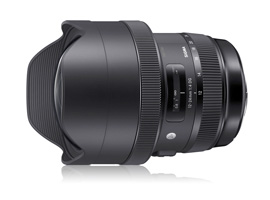


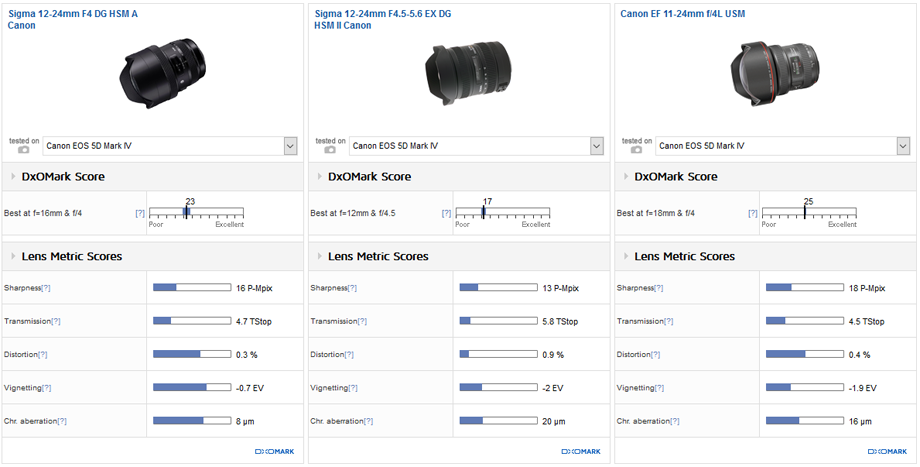
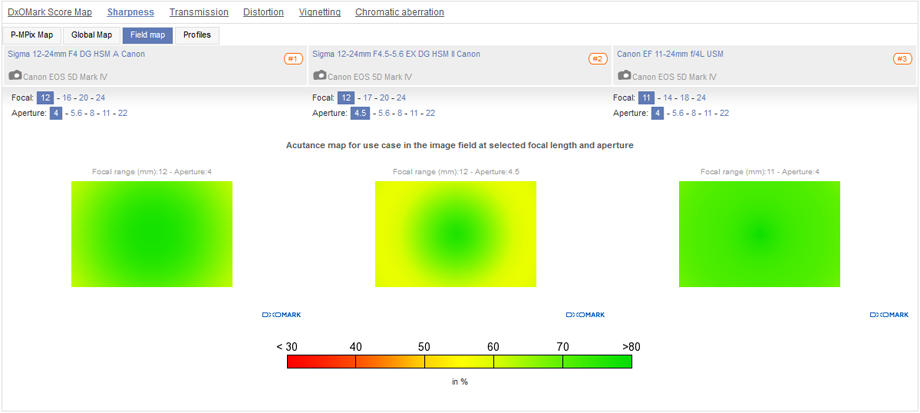
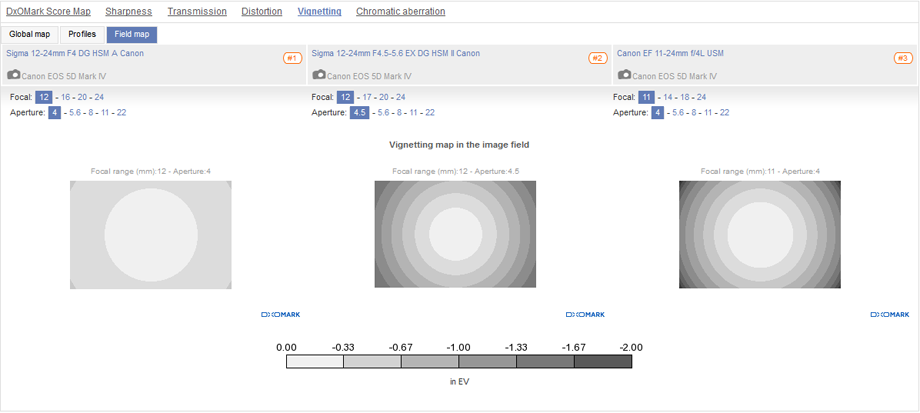
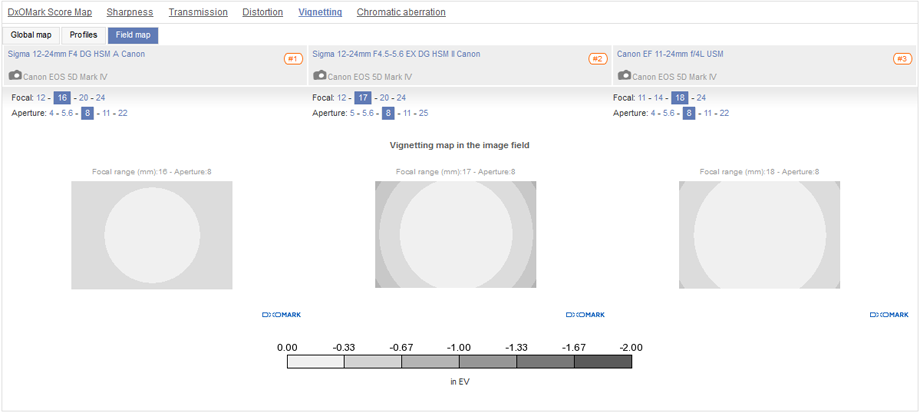
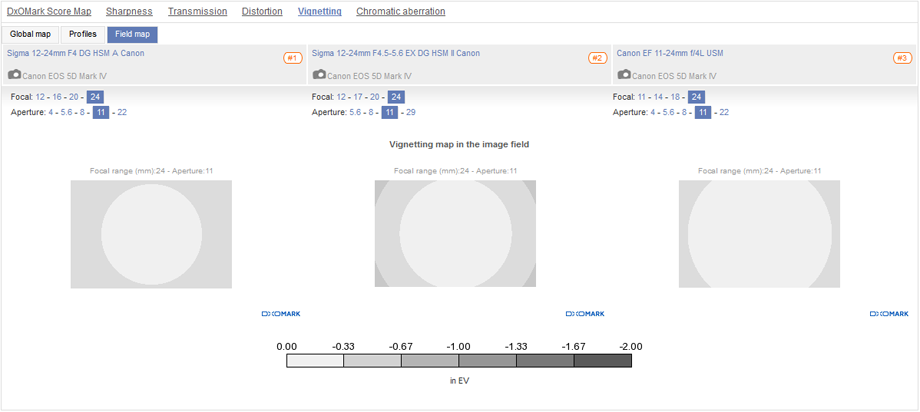
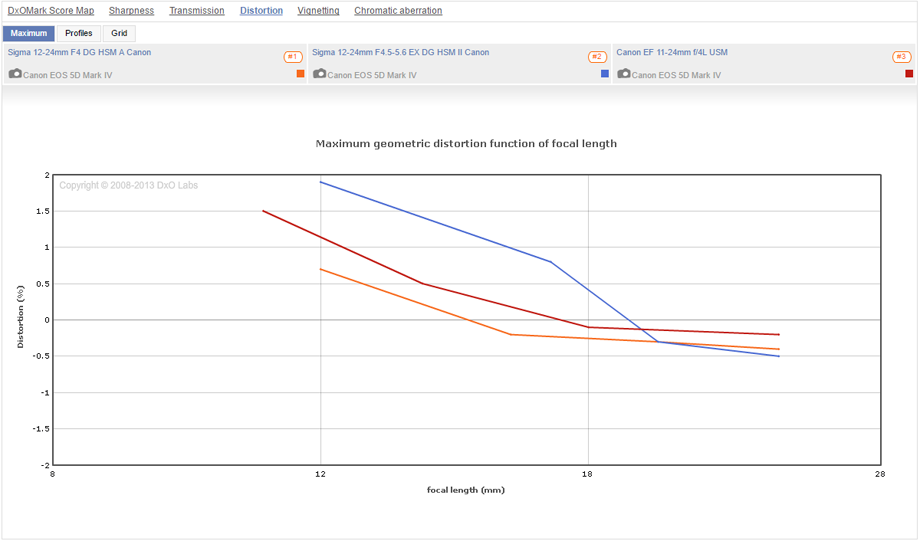
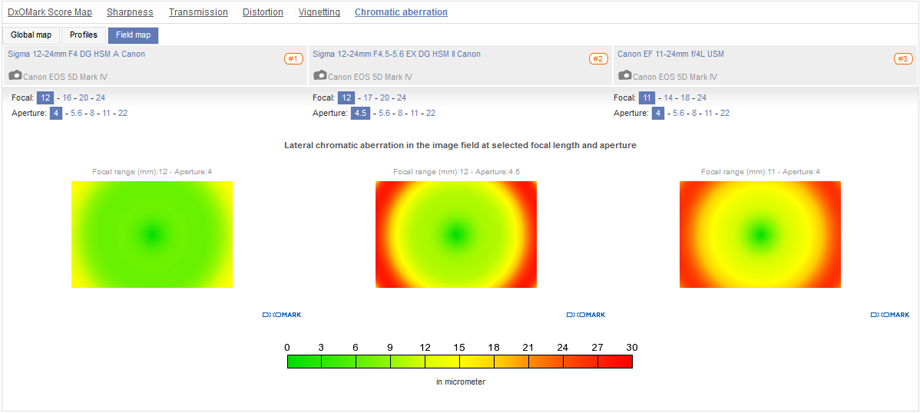
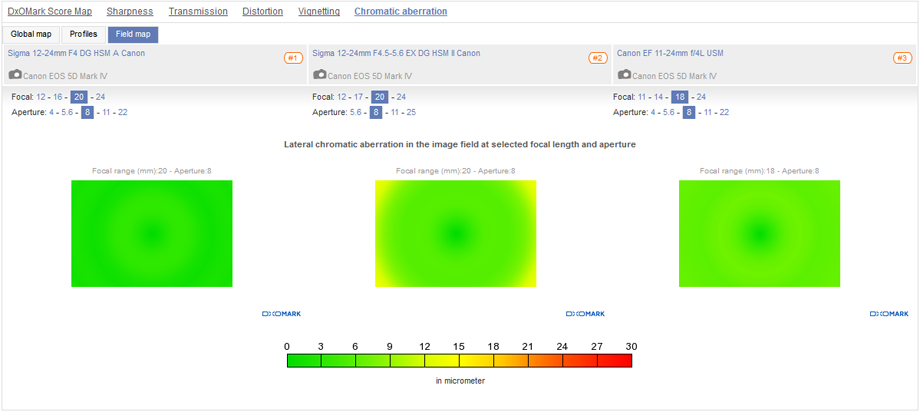
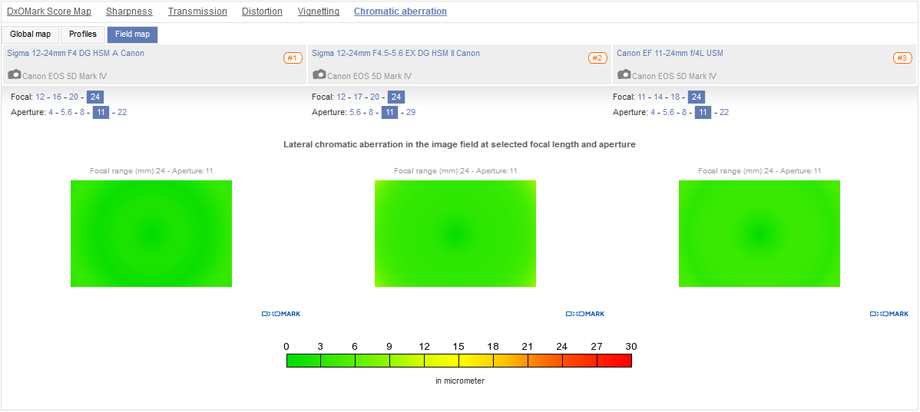
DXOMARK encourages its readers to share comments on the articles. To read or post comments, Disqus cookies are required. Change your Cookies Preferences and read more about our Comment Policy.